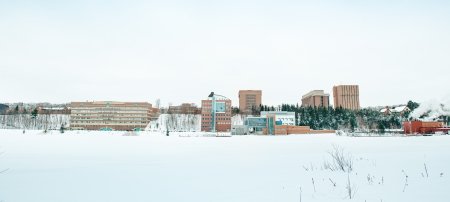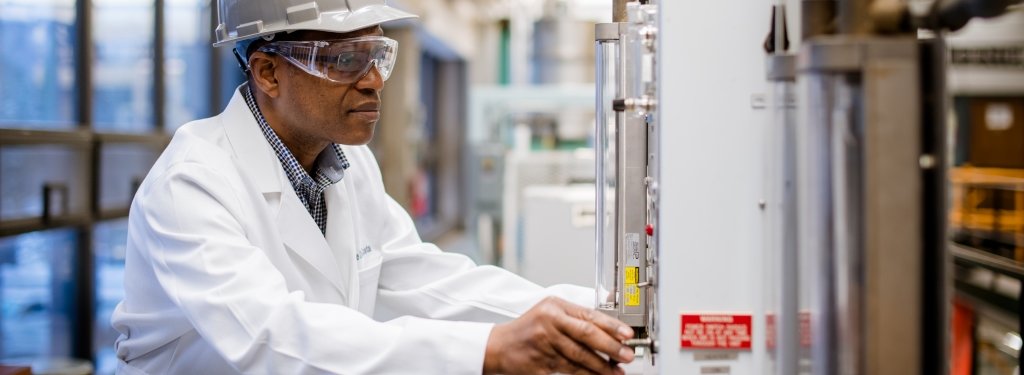The pandemic’s impacts on our campus research ecosystem are many and varied. In her guest blog, chemical engineer Rebecca Ong shares how cascading impacts pile up.
Have you ever seen a video, or maybe a real-life demonstration, where there are a bunch of mousetraps set up on the floor, each holding its own pingpong ball? Then a mysterious hand throws a single pingpong ball into the middle. You hold your breath because you instinctively know what happens next — absolute chaos. One ball bounces and the mousetrap rockets through the air. Then that ball hits two more, then four more, until there are hundreds of pingpong balls shooting around the room.

This is generally used to represent an uncontrolled chain reaction in chemistry. But for me and for many of you, that first pingpong ball was COVID-19.
Challenge: Chain Reactions Start Small
January 2021: It first struck me in January of this year that not everyone looks at COVID-19 impacts the same way. We had to report to a funding agency on these impacts to our research, and my colleague who oversaw our part of the project reported “none” for everyone. At this point, all of us had been dealing with COVID-19 for nine months or more. And, I’d been in the unenviable position of missing three people across all my funded projects. But in January 2021, I finally had everyone on this project, and so there were no direct COVID-19 impacts. Except, I was still four months delayed on the research due to events that happened the previous September.
About the Researcher
September 2020: Grad students who were supposed to work on the project couldn’t get visa appointments because all the embassies were closed. Basically, no new international graduate students arrived at Michigan Tech from overseas in September, which strongly impacted our STEM programs. The postdoctoral researcher for my project needed to return to their home country, and they weren’t sure if or when they could get back, so they withdrew from the position. With no people, I had to personally fill these roles in the lab. But, one person cannot cover four jobs. By January, we were nearly half a year behind and trying desperately to catch up — trying to grab those pingpong balls that were flying through the air, starting with the one that catalyzed everything in spring 2020.
March 2020: COVID-19 suddenly required new demands of faculty, staff and students. Keeping ourselves and our communities safe restricted us from carrying on with our normal lives. And “normal” for many of us already carried significant challenges — with the pandemic looming, our lives were rooms filled with mousetraps, loaded and ready to spring. Then it hit. The first ball dropped, and urgent tasks took precedence over what might be crucial for our careers long-term. Children who couldn’t be in school or day care suddenly needed supervision, and with COVID-19, it became impossible or risky to find even temporary child care.
In families with both parents working, we both became temporary child care workers and home-school teachers while also holding down our normal jobs. “You take four hours, I take four hours." We both worked at night and on weekends — previously this had been an “as needed” thing, but it became necessary all the time just to get everything done. (I have no idea how single parents were able to manage during this time, and they deserve awards.) Those of us taking care of the elderly or infirm now had extra responsibilities because of limitations on COVID-19 interactions with external help.
In this situation, important pre-tenure stretch goals for research, like grant proposals or building connections with new collaborators, became impossible luxuries. We instead were focused on catching all these pingpong balls that represented new challenges for me and others:
- Undertaking greater home responsibilities.
- Shifting labs and lectures to fully virtual nearly instantaneously as the University went remote after spring break.
- Caring for and supporting students, children, parents and others who were dealing with stress, anxiety and fear of the unknown.
- Training for online teaching so we would be ready for whatever happened when fall arrived.
- Dealing with delays in summer research and pivoting to new directions as labs were closed and field research was suspended.
- Preparing laboratory and field research health protocols and understanding how to conduct research under new restrictions as the University reopened.
- Dealing with supply chain issues for health products, cleaning supplies, laboratory supplies, spare parts, etc. (which included finding alternatives — and when that was not possible, experiencing delays in work or research).
- Preparing for fall semester, where we would be teaching laboratories and lectures under social distancing restrictions, in hybrid mode and fully virtual, with the necessary built-in ability to adapt instantaneously with shifts in guidelines.
- Working to help graduate students arrive for fall semester, only to realize they couldn’t come, and finding alternative teaching support to replace graduate teaching assistants.
- Planning for your first semester at a University as new faculty — where you don’t know anyone, you cannot meet students and colleagues in person and you find you won’t have any graduate students to work with.
- Missing opportunities for research, paper and proposal writing, new course prep and (maybe) a bit of a breather.
- Dealing with the inability to travel for conferences, research, networking or just to take a break and visit family.
- Setting up new research trajectories, the COVID-19 testing facility and community engagement needs in response to the pandemic.
- Providing guidance for the University and responding to and managing new directives from the state and federal governments, guidance from health officials and the disparate concerns of students, parents, faculty and staff.
- Becoming an instant expert in transmission of infectious diseases because you’re the most educated person in your family or community.
- Interacting with people who feel very differently than you about the appropriate government/university/business/personal response to the pandemic.
- Moving home as a student with classes still going on, and dealing with difficulties with the internet, technology, distractions and relationships.
- Dealing with uncertainty for future career prospects as companies instituted hiring freezes on full-time jobs, co-ops and internships; and the subsequent uncertainty in academia for how to best proceed.
- Processing and living through the emotional stress, fear and anxiety that come with being in a global pandemic.
If you have enough balls in the air, they quickly become impossible to manage and you must make the choice to let some hit the ground or lose them all. Managing the pandemic soon became all about doing exactly what you must do in this moment and sacrificing what you want to do or what may most help your career in the long term. It’s been triage.
Solution: Big Changes Need Patience
Back to the present: The pandemic is not over. Pingpong balls are still flying through the air for most of us, and we are still trying to catch them. Delays we have experienced in research — we can never make that time up. I’ve lost grants because we couldn’t make progress with no personnel to work on the project. I’ve lost funding opportunities because there was no time to write proposals. I’ve had delays in research when people couldn’t be in the lab. This may affect my ability to keep existing funding or have future proposals funded. Even if things go back to “normal,” I can never fully make up for what might have been. Acknowledging this is important; otherwise, I can’t do anything about it.
So what is the solution? What can we do to fix this? I really don’t think it can be fixed, if fixing means replacing what was lost. We’ve all come through incredibly difficult experiences and bear scars from it. We can’t fix that, but we can all have a little more understanding and compassion for each other. Everyone’s catching pingpong balls because of COVID-19, but some have had more to juggle and maybe more that dropped. And this number is not always obvious either, much like a thunderstorm doesn’t always leave traces. Plus, many of us still have balls flying around that we were trying to catch before the pandemic. With the recent surge in the delta variant, we are silently dreading the next COVID-19 ball that drops.
The pandemic is a bit like the aftermath of the June 2018 flood from three years ago. The flood did not affect everyone the same way — and as a community, we banded together to help those most strongly affected. I think we can do the same thing with the pandemic: help each other out. If I don’t currently have a lot of balls in the air, maybe I could try to catch a few for someone else — and also extend my understanding when a few of their balls hit the floor. And although the chaos and mess will linger, all chain reactions do run their course.
Michigan Technological University is an R1 public research university founded in 1885 in Houghton, and is home to nearly 7,500 students from more than 60 countries around the world. Consistently ranked among the best universities in the country for return on investment, Michigan's flagship technological university offers more than 185 undergraduate and graduate degree programs in science and technology, engineering, computing, forestry, business, health professions, humanities, mathematics, social sciences, and the arts. The rural campus is situated just miles from Lake Superior in Michigan's Upper Peninsula, offering year-round opportunities for outdoor adventure.







Comments